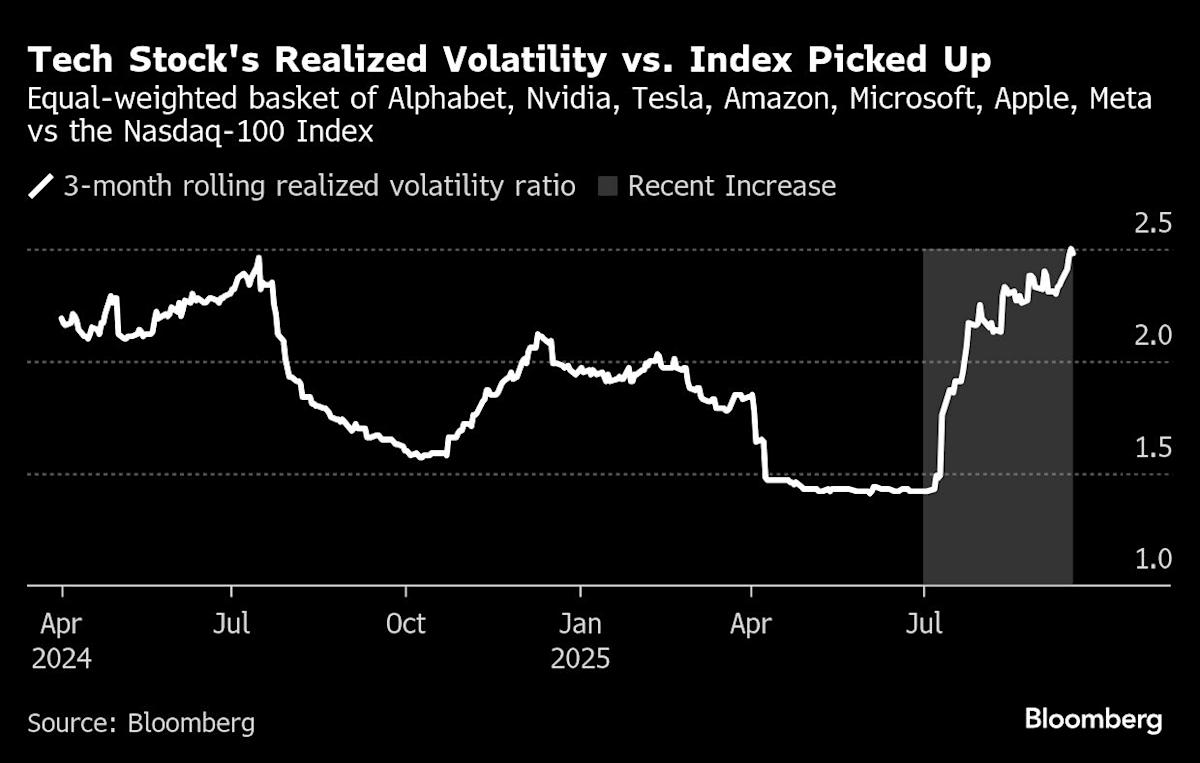Popular Hedge Fund Options Strategy Attracts Contrarian Bets
(Bloomberg) — The dispersion trade has become one of the most popular strategies among Wall Street hedge funds. Now, some investors are taking the other side of the wager.
The US equity market has been deceptively calm since the start of August, with 60-day realized volatility the lowest since before the pandemic. The go-to measure of market gyrations, the Cboe Volatility Index, has been stuck below its long-term average of 20 since mid-June. But beneath the surface, individual stock prices are churning violently — Oracle Corp.’s 32% surge over the past month is just one example.
Most Read from Bloomberg
That dynamic has drawn hedge funds to ramp up bets on calm in the broader equity market and wider swings in individual shares. As long as the S&P 500 Index grinds higher in a tight daily range and stocks move in various directions, the bet pays off, but margins are narrowing.
The trade has become “extremely crowded,” said Benn Eifert, managing partner and co-CIO at hedge fund QVR Advisors. “There are massive dispersion trades by big pod shops.”
Around six weeks ago, his fund decided to go against the herd, putting on the opposite trade. The difference between the implied volatility for single names and for the index is near “the highest level it ever gets,” said Eifert. “We do have the reverse dispersion trade on: We’re long index vol, short single name vol.”
His move against the tide reflects the challenge for fund managers in the dispersion trade. Options on single stocks have become relatively expensive, while the premiums earned from selling index options is limited.
“There’s definitely structural supply of volatility and we think that has a depressing impact,” said Greg Boutle, head of US equity and derivatives strategy at BNP Paribas SA.
That doesn’t mean selling index volatility is necessarily a bad idea, as such conditions can last for long periods of time.
“These things can persist a lot longer than you would think,” said Boutle, noting that 2018’s Volmageddon episode where the VIX spiked violently followed 18 months of low volatility.
In some ways, the index calm can be related to wider single-stock swings. If shares of one company jumps 20% in a day and another similarly-sized stock is down the same amount, the net impact on the S&P 500 will be zero.
There are downsides to QVR’s opposite strategy: Eifert notes the position has “idiosyncratic loss exposure” that occurs when a single-name stock has a dramatic spike, such as the recent jumps in Oracle or Intel Corp.



Leave a Comment
Your email address will not be published. Required fields are marked *